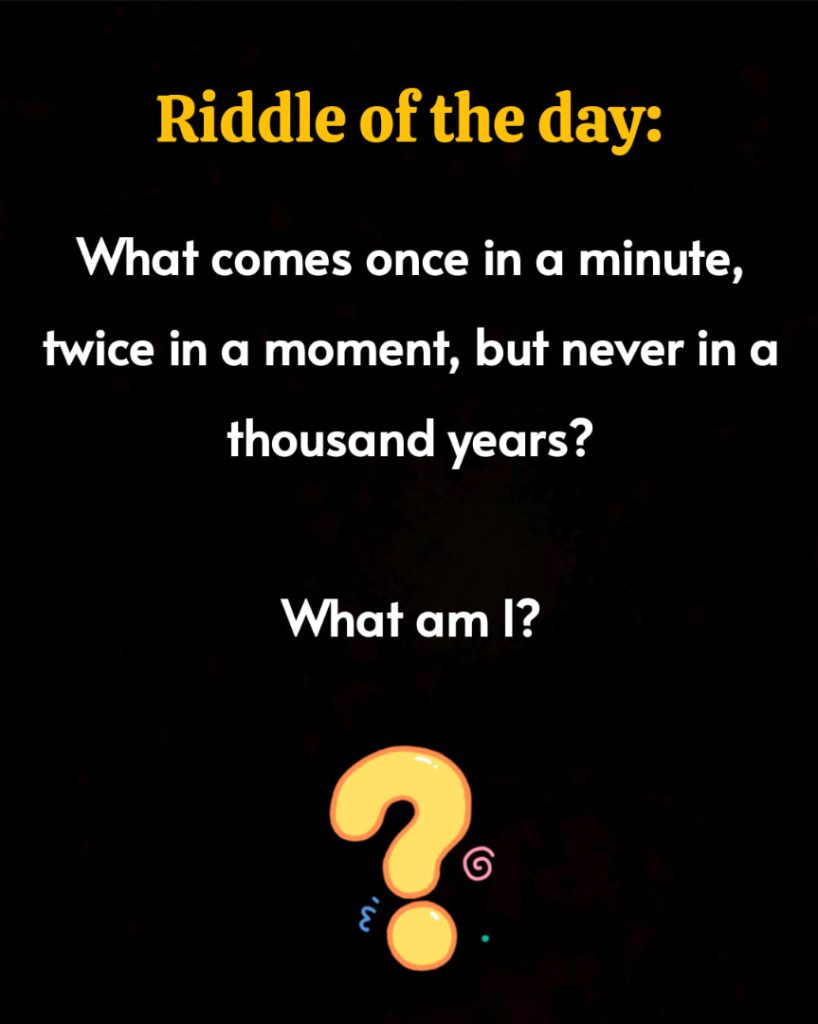Riddles have always been a fun and clever way to challenge our brains. They’re not just for entertainment — they sharpen our thinking, test our logic, and often make us see things from an unexpected angle. Some riddles are tricky because they use wordplay, while others mislead us by sounding logical but hiding the truth in plain sight. Today’s riddle is the perfect example of that:
“What comes once in a minute, twice in a moment, but never in a thousand years?”

At first glance, most people focus on the concept of time. A minute, a moment, and a thousand years all suggest that the answer must be time-related. It seems like a question about frequency, patterns, or historical timing. But here’s the twist — the riddle isn’t about time at all. It’s about letters.
Video: What comes once in a minute, twice in a moment, but never in a thousand years?
Analyzing the Riddle
Let’s break it down word by word:
- The word “minute” contains one letter “M”.
- The word “moment” contains two “M”s.
- The phrase “a thousand years” contains no letter “M” at all.
So, the answer is not a concept or a physical object — it’s a letter. Specifically, it’s the letter M.
Video: What comes once in a minute, twice in a moment, but never in a thousand years?
Answer: The Letter M
This riddle is a great example of a wordplay puzzle. It tricks you into thinking about meaning and measurement, when in fact, the answer lies in the spelling of the words themselves. Once you realize that the riddle is referring to the appearance of the letter M in each word or phrase, the whole thing clicks.
And the best part? It’s so simple, you wonder how you didn’t see it sooner.
Conclusion
“What comes once in a minute, twice in a moment, but never in a thousand years?” isn’t just a brain teaser — it’s a reminder that sometimes the most clever solutions are the ones hiding in plain sight. This kind of riddle doesn’t just test your knowledge; it challenges your perspective. It teaches us to think outside the box and pay closer attention to language.
So next time you hear a riddle like this, don’t just look for the deep meaning. Sometimes, the answer is just a single letter away.